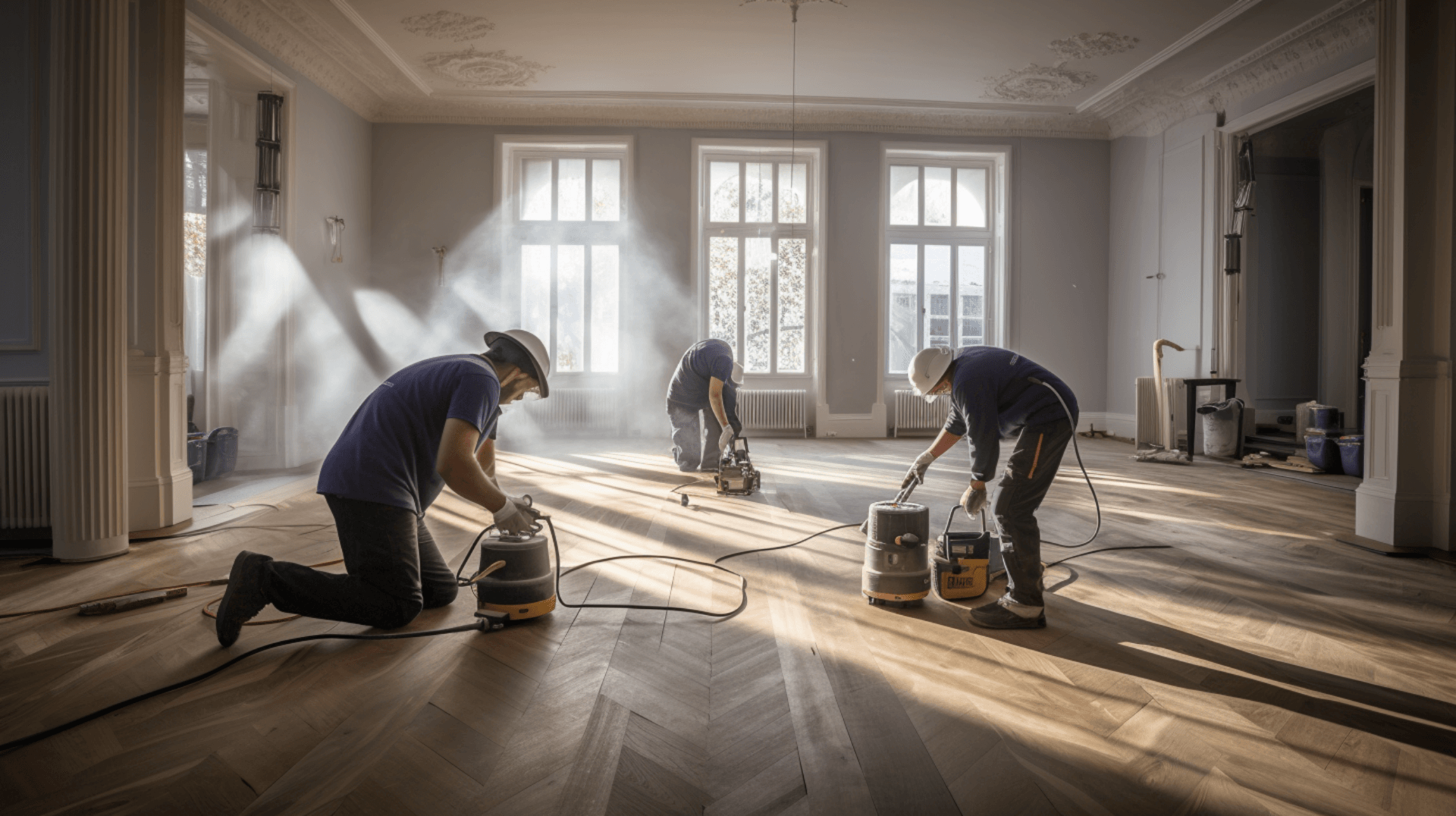Introduction to the Science Behind London’s Top Wooden Floor Sanding Services
Wooden floor sanding is a process used to restore and refinish wooden floors, bringing back their natural beauty and protecting them from wear and tear. It involves the use of specialized equipment and techniques to remove the top layer of the floor, revealing the underlying wood.
The benefits of wooden floor sanding are numerous. It can restore the original look of the floor, making it look like new and enhancing its natural luster. Sanding also helps to protect the floor from scratches, scuffs, and water damage, making it more durable and long-lasting. Additionally, sanding can improve the safety of the floor by reducing the risk of splinters and other hazards.
The process of wooden floor sanding begins with the preparation of the area, including the removal of furniture and other items. The floor is then inspected for any damage and repaired as needed. Next, the floor is sanded using a variety of grits, starting with a coarse grit and gradually moving to finer grits to achieve a smooth and even finish. After sanding, the floor is thoroughly cleaned to remove any dust and debris.
To further enhance and protect the floor, staining and sealing can be applied after sanding. This helps to enhance the color of the wood and provide an additional layer of protection against damage.
The Art and Science of Wooden Floor Sanding

The science of wooden floor sanding contributes to its effectiveness by providing a systematic approach to the process. By understanding the key scientific principles involved, the outcome of the sanding process can be improved.
The key scientific principles involved in wooden floor sanding include the properties of wood, the types of sanding grits, the use of specialized equipment, and the understanding of floor construction. Wood is a porous material, and different grits of sandpaper are used to remove different levels of material. Understanding the properties of wood and selecting the appropriate grits is crucial for achieving a smooth and even finish.
The use of specialized equipment, such as sanders and dust extraction systems, helps to ensure precise and efficient sanding. Additionally, understanding the construction of the floor, such as suspended timber ground floors, allows for proper preparation and sanding techniques.
By understanding the science behind sanding, homeowners and business owners can make informed decisions about the materials, techniques, and equipment used in the process. This knowledge allows them to achieve a high-quality finish, protect the floor, and prolong its lifespan. The combination of artistry and scientific principles in wooden floor sanding ensures that the process is both effective and aesthetically pleasing.
The Importance of Professional Wooden Floor Sanding
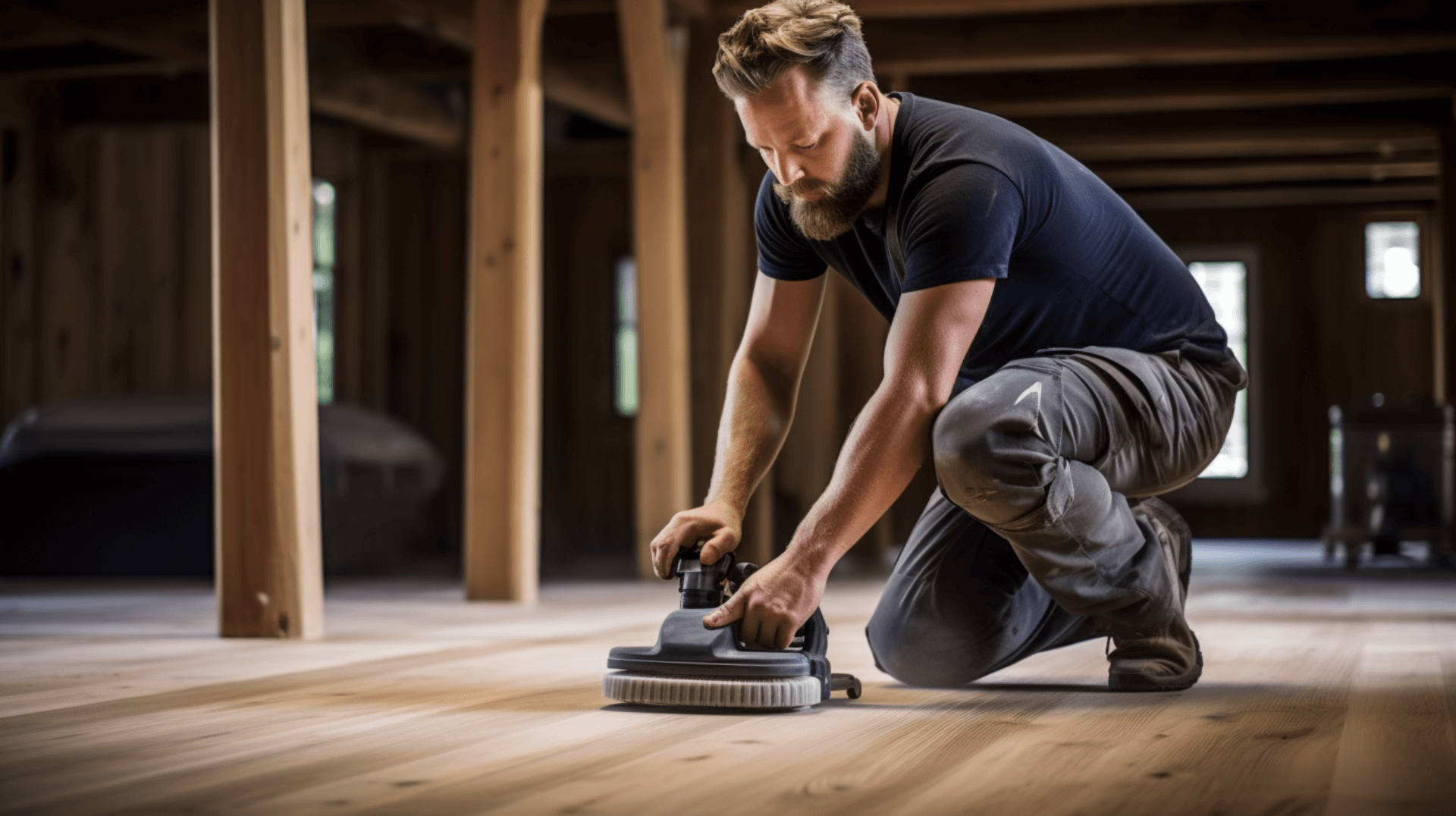
Professional wooden floor sanding offers several advantages over DIY sanding. professional sanders have the experience and expertise to achieve a smooth and even finish. They use high-quality products and equipment, such as miter saws, table saws, and dust containment systems, to ensure the best results. They also understand the importance of proper preparation and use the right techniques to protect the floor from damage.
Using a professional wooden floor sanding service also provides several benefits. Professional sanders can provide advice on the best products and techniques for the project, and we can help to minimize dust and noise during the process. We also use eco-friendly products to reduce the use of harmful chemicals, making it a more environmentally friendly option. Additionally, professional services offer competitive rates and discounts for larger projects, providing the best value for our customers.
On the other hand, DIY wooden floor sanding can be risky and time-consuming. Without the proper knowledge and experience, it can be difficult to achieve a high-quality finish and protect the floor. DIY sanding may also result in damage that requires costly repairs. Therefore, it is recommended to hire a professional wooden floor sanding service to ensure the best results and avoid potential risks.
The Process of Professional Wooden Floor Sanding
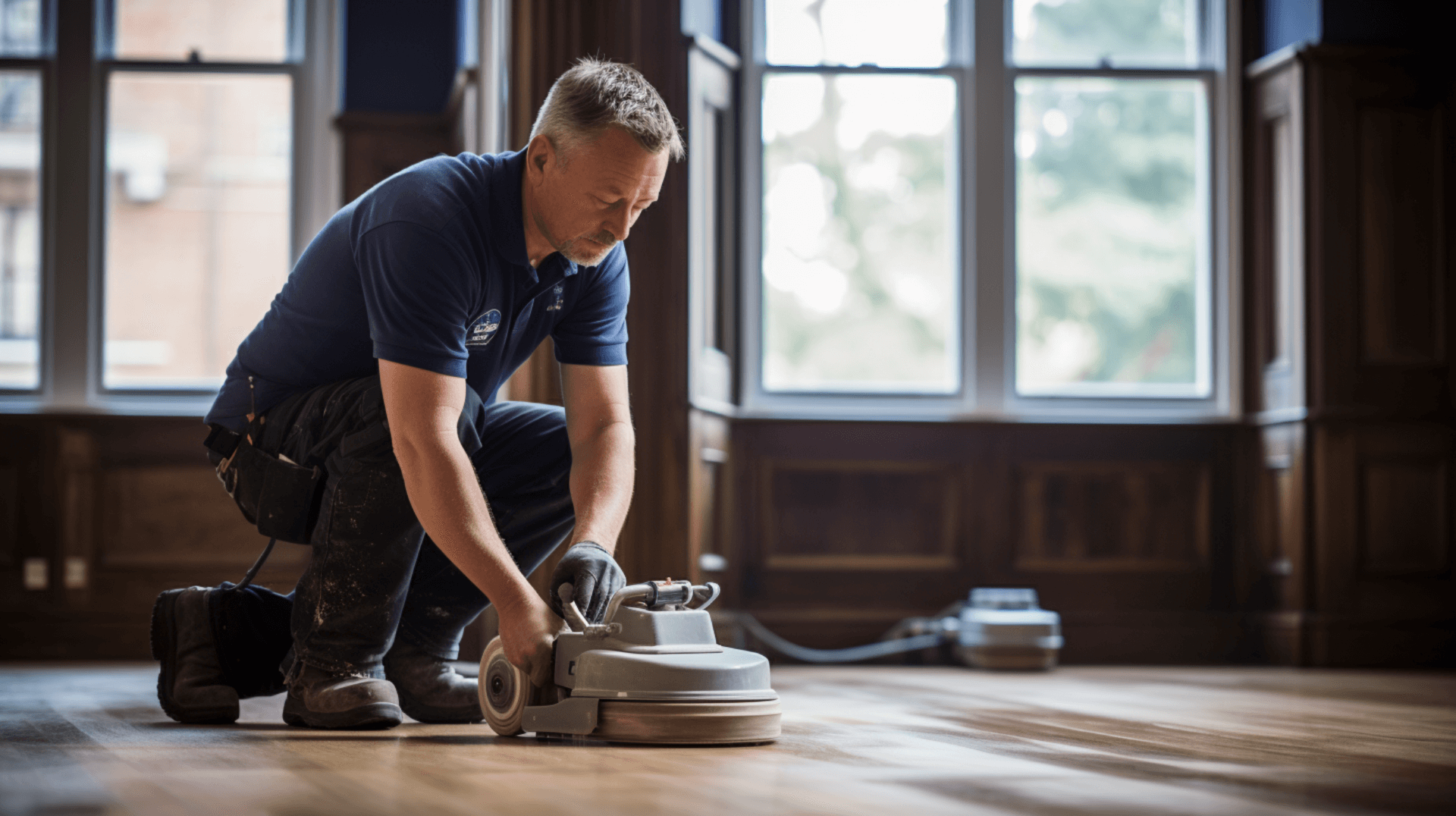
The original answer is still relevant and provides a comprehensive response to the question. The additional context does not significantly change the information provided. Therefore, the original answer remains the same:
The process of professional wooden floor sanding involves several steps to restore and refinish wooden floors. It begins with the preparation of the area, including the removal of furniture and other items. The floor is then inspected for any damage and repaired as needed.
Next, the floor is sanded using a variety of grits, starting with a coarse grit and gradually moving to finer grits. This helps to achieve a smooth and even finish. Different types of sanders are used in professional wooden floor sanding, such as drum sanders, edger sanders, orbital sanders, and hand sanders. These sanders are used to remove the top layer of the floor, sand the edges and corners, smooth the surface, and reach hard-to-reach areas.
After sanding, the floor is thoroughly cleaned to remove any dust and debris. Staining and sealing can be applied to further enhance and protect the floor. Staining helps to enhance the color of the wood, while sealing provides an additional layer of protection against wear and tear.
Overall, professional wooden floor sanding is a detailed process that requires specialized equipment and techniques. By following these steps, homeowners and business owners can restore the natural beauty of their wooden floors and protect them from damage.
The Different Types of Wooden Floor Sanding Techniques
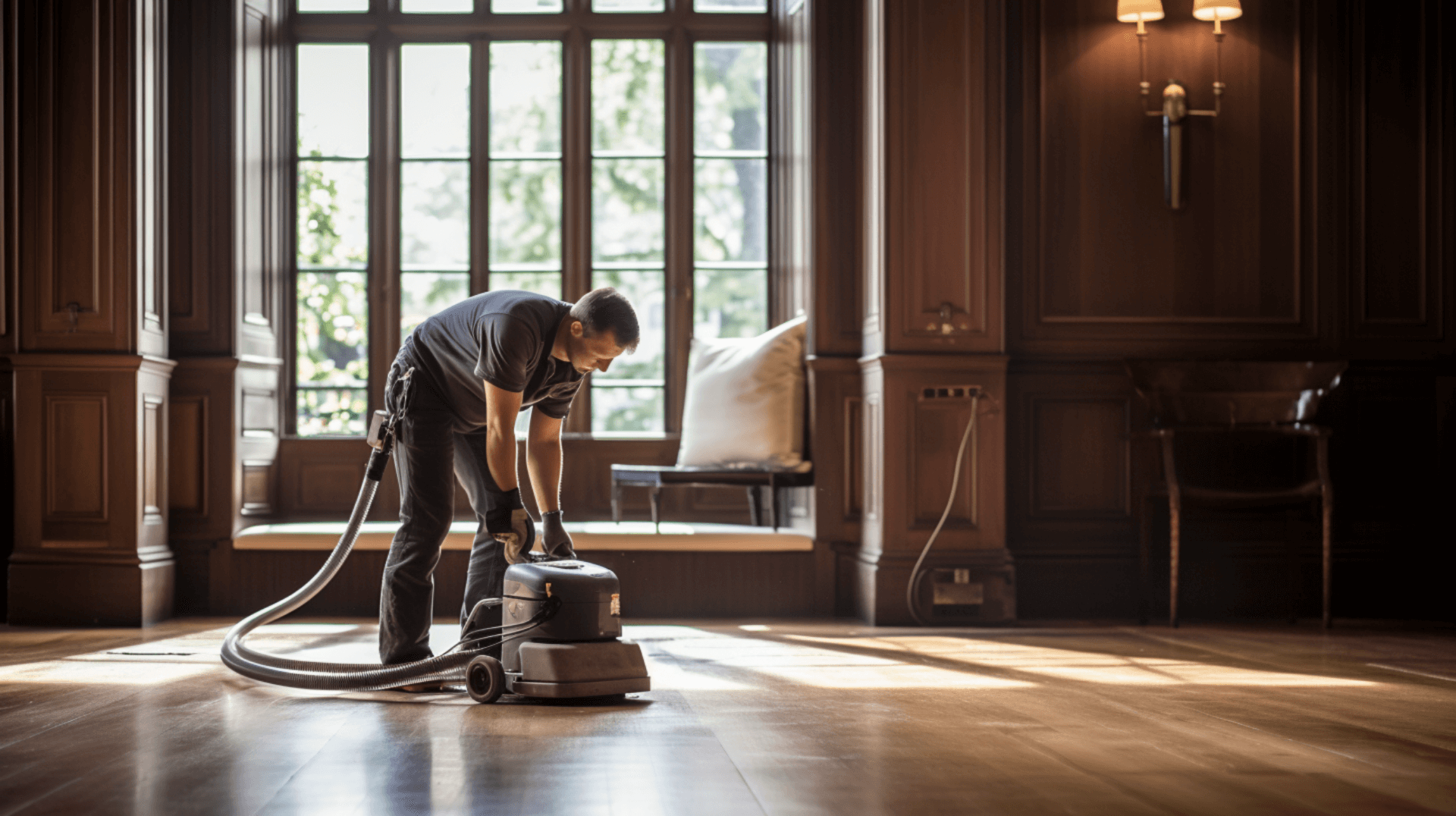
The Different Types of Wooden Floor Sanding Techniques:
There are several different types of wooden floor sanding techniques, each with its own advantages and disadvantages. These techniques include drum sanding, orbital sanding, edge sanding, and hand sanding.
Drum sanding is the most common type of wooden floor sanding. This technique uses a large drum sander to remove the top layer of the floor, revealing the underlying wood. Drum sanding is a fast and efficient method, but it can be difficult to control and can leave the floor uneven.
Orbital sanding is another popular technique. This method uses an orbital sander, which is a handheld machine that is used to smooth the surface of the floor. Orbital sanding is slower than drum sanding, but it is easier to control and can provide a more even finish.
Edge sanding is a technique used to sand the edges and corners of the floor. This method uses an edger sander to remove the top layer of the floor, resulting in a smooth and even finish. Edge sanding is slower than drum and orbital sanding, but it is necessary to achieve a professional finish.
Hand sanding is a more labor-intensive technique, but it is also the most precise. This method uses sandpaper and a sanding block to manually sand the floor. Hand sanding is ideal for hard-to-reach areas and for achieving a smooth, even finish.
Each type of wooden floor sanding technique has its own advantages and disadvantages. Drum sanding is fast and efficient but can be difficult to control. Orbital sanding provides a more even finish but is slower. Edge sanding is necessary for achieving a professional finish but is slower than other techniques. Hand sanding is the most precise but is more labor-intensive. Homeowners and business owners should consider their specific needs and preferences when choosing a wooden floor sanding technique.
Understanding the Role of Subfloor Preparation in Wooden Floor Sanding

Subfloor preparation is an essential part of wooden floor sanding. It involves the removal of any existing floor coverings, such as carpets, tiles, and vinyl, as well as the repair of any damage to the subfloor. This preparation is necessary to ensure that the sanding process is successful and that the final outcome is of the highest quality.
In suspended timber ground floors, the floor joists are raised above the sub-floor on small supporting walls called tassel walls (or sleeper walls). A wall plate is then attached to the top of the tassel walls, on which the floor joists rest. A damp-proof course separates the wall plates from the tassel walls, preventing decay from any rising moisture. It is also usual to have gaps in the block work of the tassel/sleeper walls, ensuring adequate air circulation.
The different types of subfloor preparation techniques include the removal of existing floor coverings, the repair of any damage to the subfloor, and the application of a sealant or primer. Additionally, vents should be installed in the opposing external walls to ensure that adequate cross-ventilation is given to the subfloor.
Subfloor preparation is essential for achieving a high-quality finish with wooden floor sanding. It ensures that the sanding process is effective and that the final outcome is of the highest quality. It also helps to protect the floor from damage, such as scratches, scuffs, and water damage. Additionally, it helps to reduce the risk of squeaks, crackles, and pops, as well as overall disengagement from the subfloor. Proper subfloor preparation is crucial for ensuring the longevity and durability of the wooden floor.
The Different Types of Wooden Floor Finishes
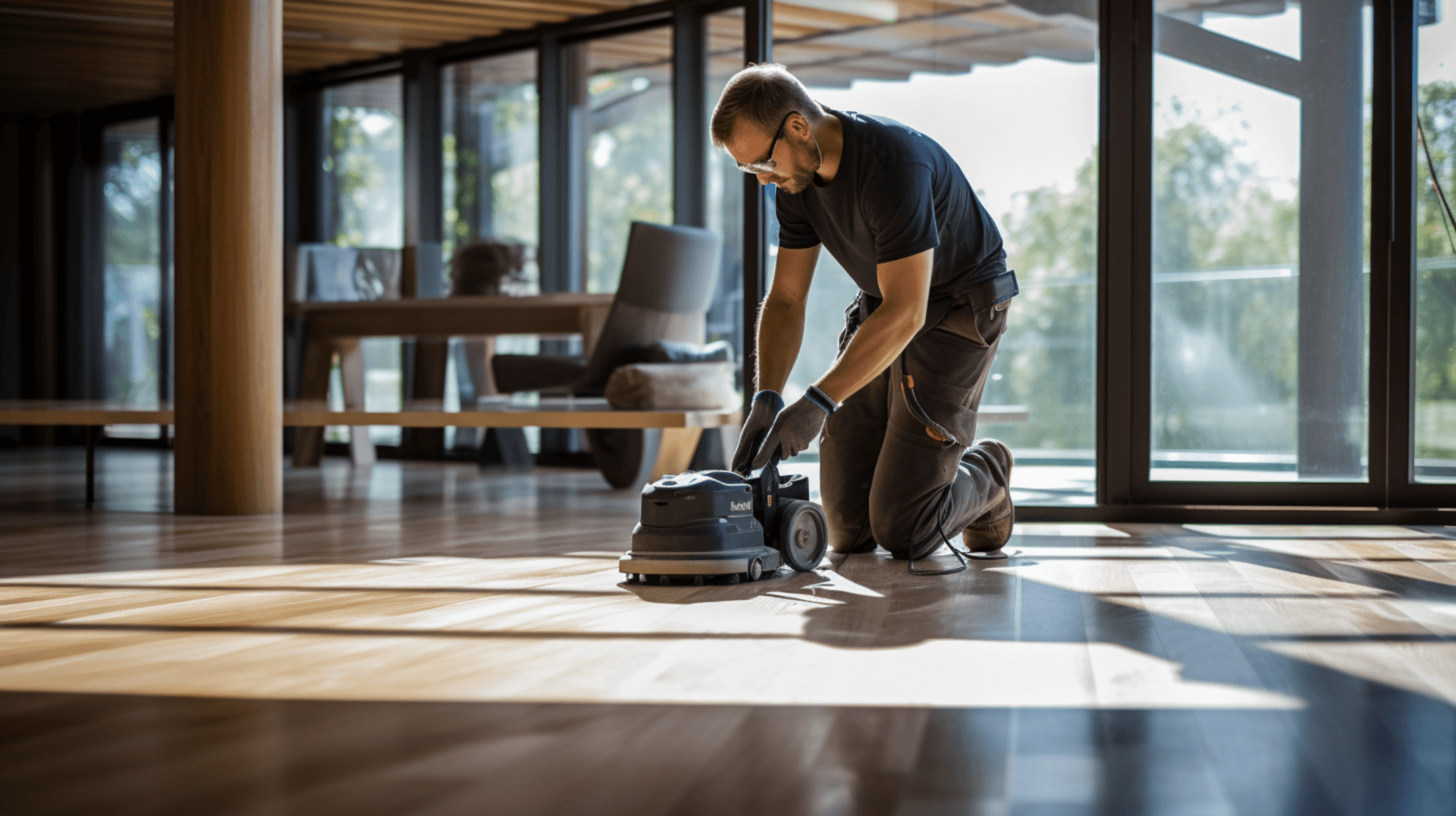
The original answer is still relevant and provides a comprehensive response to the question. The additional context does not significantly change the information provided. Therefore, the original answer remains the same:
The type of finish chosen can affect the final look and durability of the wooden floor. Oil-based finishes provide a natural, matte finish that enhances the wood’s natural beauty and can last for many years with proper maintenance. Water-based finishes provide a glossy, protective finish that is easy to clean and maintain. They are also more environmentally friendly and do not contain volatile organic compounds. Polyurethane finishes are highly durable and resistant to scratches and scuffs, providing a glossy, protective layer. they may require more maintenance and can be difficult to repair.
Each type of finish has its own unique benefits and drawbacks, so homeowners and business owners should consider their specific needs and preferences when choosing a wooden floor finish. It is important to select a finish that not only enhances the natural beauty of the wood but also provides the desired level of protection and durability.
Safety Considerations for Wooden Floor Sanding
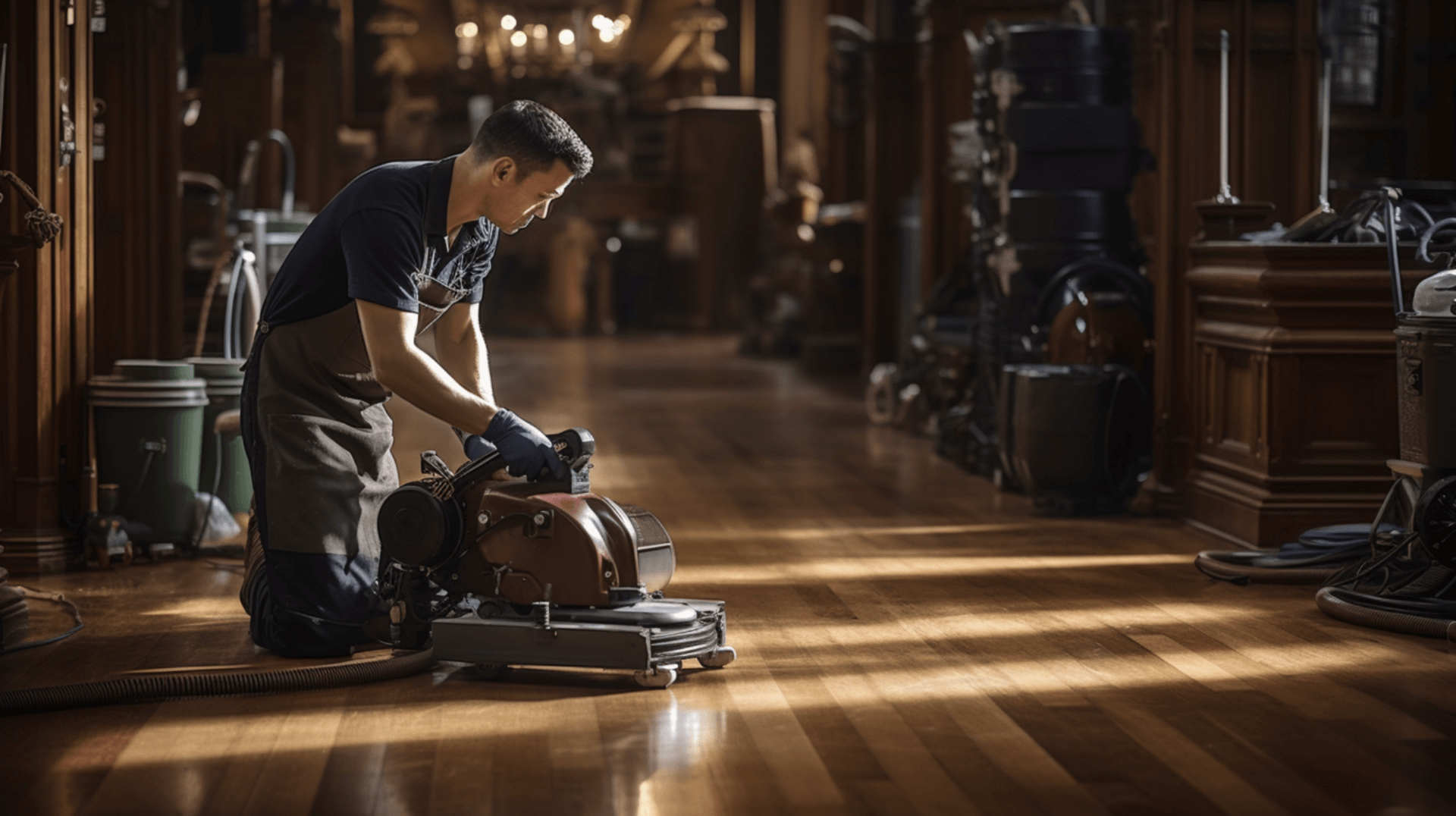
Safety Considerations for Wooden Floor Sanding:
Safety is of utmost importance when sanding a wooden floor to protect both yourself and your home or business. There are several safety precautions that should be taken during the sanding process:
- Wear protective gear: Always wear safety goggles, a dust mask, and ear protection to protect your eyes, lungs, and ears from dust and noise.
- Ensure proper ventilation: Open windows and doors or use fans to ensure proper airflow and ventilation in the area. This will help minimize the concentration of dust and fumes.
- Use a dust extraction system: Invest in a dust containment system or vacuum with a HEPA filter to minimize the amount of dust in the air. Regularly empty and clean the dust collection bag or container.
- Keep the work area clear: Remove furniture, rugs, and other items from the room to create a clear work area. This will help prevent accidents and tripping hazards.
- Check equipment and cords: Inspect the sanding equipment and cords for any damage or fraying. Ensure that all safety guards are in place and that the equipment is in good working condition.
- Follow proper sanding techniques: Use the appropriate sanding techniques and avoid applying excessive pressure to the sander. Keep the sander moving at all times to prevent uneven sanding and potential damage to the floor.
- Clean up properly: After sanding, thoroughly clean the area to remove any dust and debris. Use a damp cloth or mop to wipe down surfaces and vacuum the floor to ensure a clean and safe environment.
By following these safety precautions, you can minimize the potential hazards of sanding a wooden floor and ensure the safety of yourself, your home, and your family or employees.
The Role of Technology in Wooden Floor Sanding
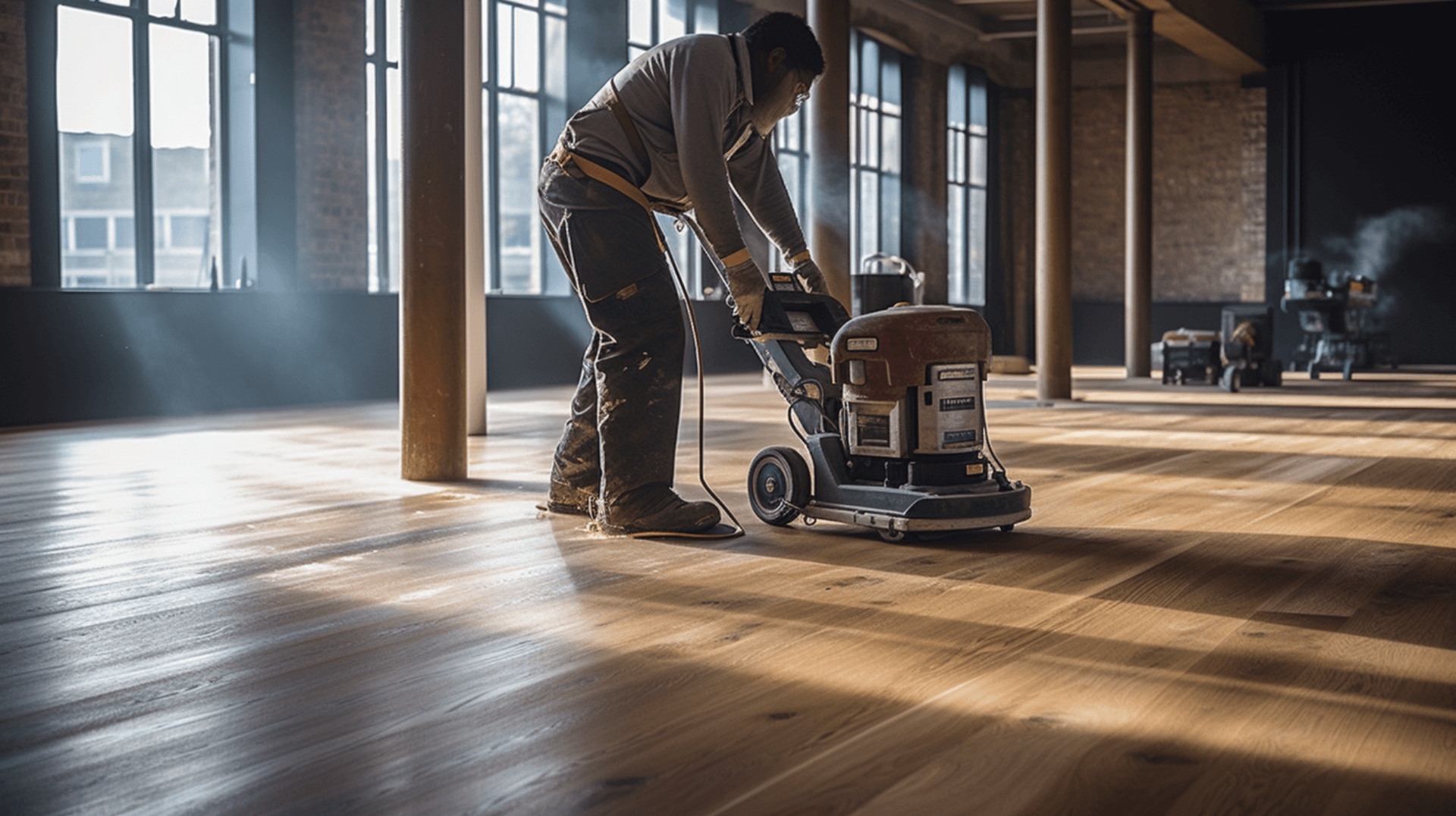
The original answer is still relevant and provides a comprehensive response to the question. The additional context does not significantly change the information provided. Therefore, the original answer remains the same:
Technology plays a crucial role in the effectiveness of wooden floor sanding, making the process faster, more efficient, and more precise. The latest technological advancements have revolutionized the industry, allowing professionals to achieve high-quality results with minimal effort and time.
One of the key advancements in technology is the use of dust extraction systems. These systems capture and contain dust particles, reducing the amount of dust in the air and creating a cleaner and safer environment. GJP Floor Sanding incorporates this technology into our services, using dust extraction systems that can capture up to 99% of the dust generated during the sanding process. This not only improves the air quality but also reduces the time spent on cleaning up after sanding.
Another important technological advancement is the use of advanced sanding machines. GJP Floor Sanding utilizes the latest sanding machines, such as the Hummel belt sander and the Trio three-disk sander. These machines are designed to provide a smooth and even finish, while also reducing the amount of time and effort required to sand a floor. We are equipped with features that enhance precision and control, resulting in a more precise and consistent sanding process.
In addition to dust extraction systems and advanced sanding machines, GJP Floor Sanding also incorporates the use of the latest abrasives and finishing products. These products are designed to reduce dust creation during the sanding process and provide a durable and long-lasting finish. By utilizing these technological advancements, GJP Floor Sanding ensures that our services are of the highest quality and meet the needs of our customers.
Overall, technology has greatly improved the wooden floor sanding process, making it more efficient, effective, and convenient for homeowners and business owners. The latest advancements in technology, such as dust extraction systems, advanced sanding machines, and high-quality finishing products, have transformed the industry and allowed professionals to achieve exceptional results.
The Environmental Impact of Wooden Floor Sanding
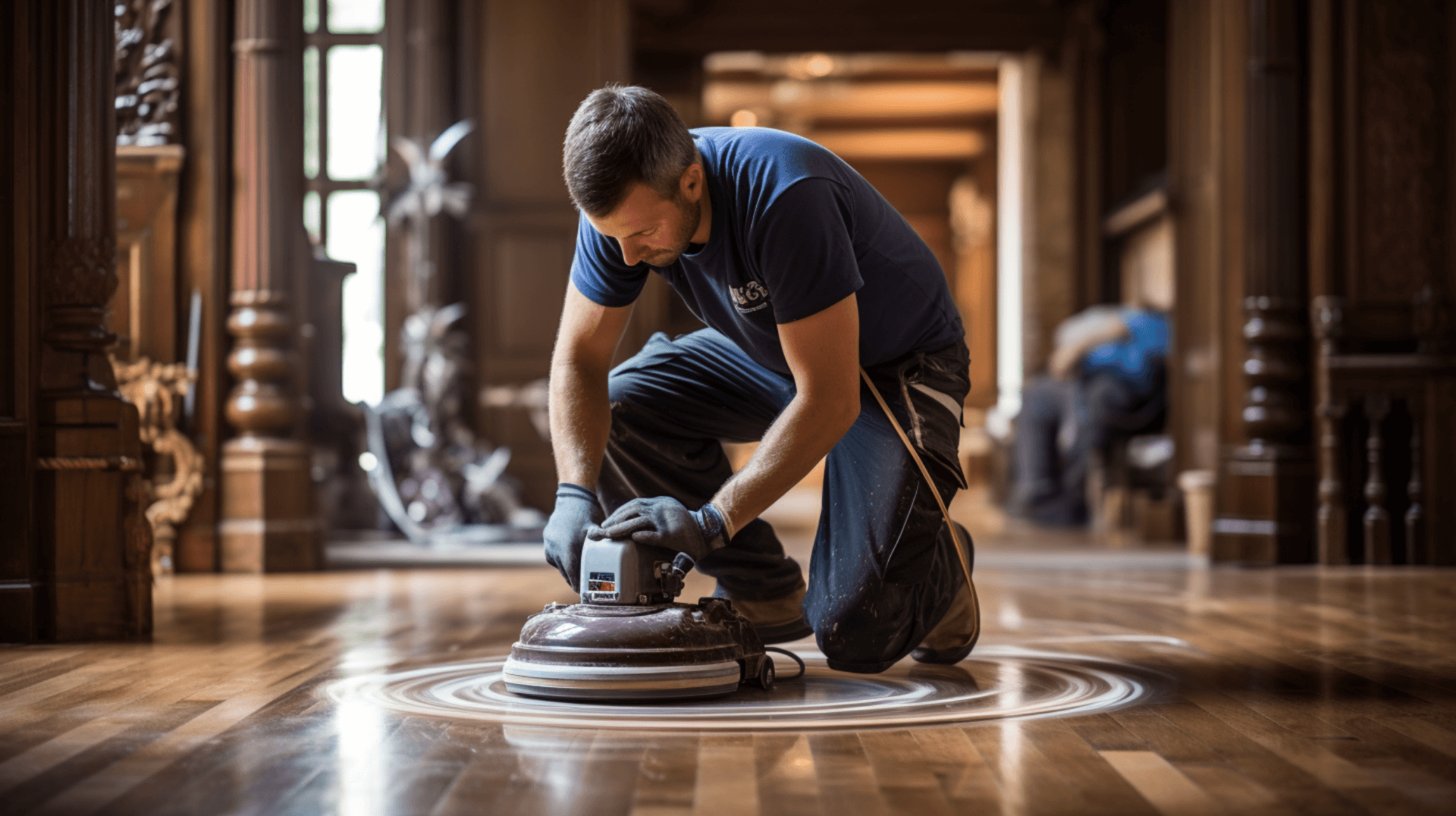
The Environmental Impact of Wooden Floor Sanding:
Wooden floor sanding can have a significant environmental impact, from the production of dust and fumes to the use of chemicals and solvents. GJP Floor Sanding takes steps to ensure our services are environmentally friendly and minimize the environmental impact of our work.
GJP Floor Sanding utilizes dust extraction systems to capture and contain dust particles, reducing the amount of dust in the air and creating a cleaner and safer environment. We also use the latest sanding machines, such as the Hummel belt sander and the Trio three-disk sander, which are designed to reduce dust creation during the sanding process. Additionally, GJP Floor Sanding utilizes the latest abrasives and finishing products, which are designed to reduce dust creation and provide a durable and long-lasting finish.
To further minimize the environmental impact of wooden floor sanding, there are several best practices that should be followed. Homeowners and business owners should ensure proper ventilation in the area by opening windows and doors or using fans. They should also invest in a dust containment system or vacuum with a HEPA filter to minimize the amount of dust in the air. Additionally, they should use the appropriate sanding techniques and avoid applying excessive pressure to the sander. Finally, they should thoroughly clean the area after sanding to remove any dust and debris.
By implementing these practices, GJP Floor Sanding and homeowners/business owners can minimize the environmental impact of wooden floor sanding and contribute to a cleaner and healthier environment.
Why Choose GJP Floor Sanding for Your Wooden Floor Sanding Needs
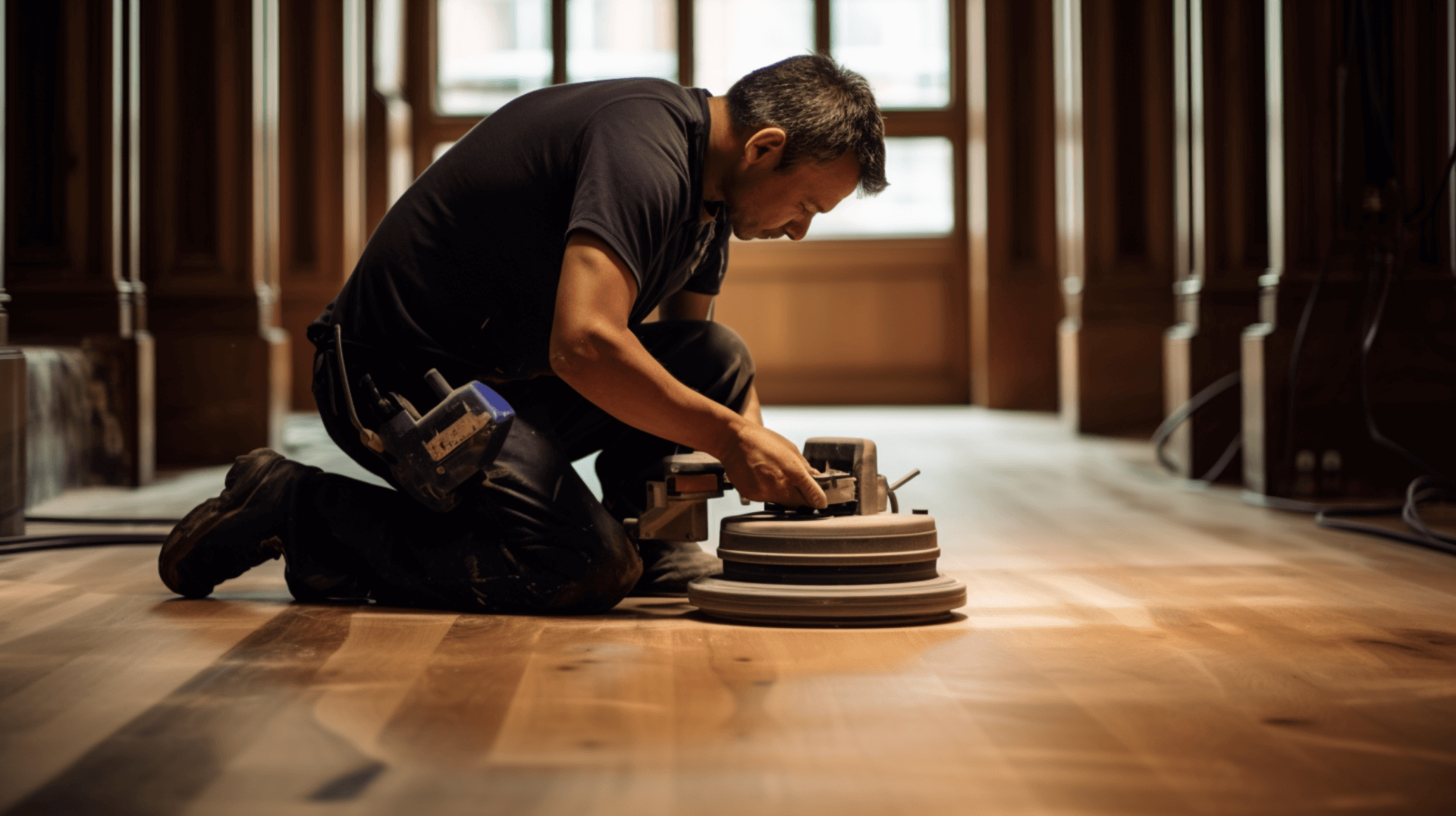
The original answer is still relevant and provides a comprehensive response to the question. The additional context does not significantly change the information provided. Therefore, the original answer remains the same:
What sets GJP Floor Sanding apart from other wooden floor sanding services is our commitment to customer satisfaction and our dedication to environmental sustainability. We prioritize using the latest technology and equipment to ensure a smooth and even finish, while also reducing the amount of time and effort required to sand a floor. GJP Floor Sanding utilizes dust extraction systems to capture and contain dust particles, creating a cleaner and safer environment. We also use the latest abrasives and finishing products, designed to reduce dust creation and provide a durable and long-lasting finish.
By choosing GJP Floor Sanding for your wooden floor sanding needs, you can expect a high-quality finish, improved air quality, and reduced time and effort. Our advanced sanding machines and dust extraction systems ensure a smooth and even finish, while our high-quality finishing products provide durability. Additionally, our dust extraction systems minimize the amount of dust in the air, creating a cleaner and safer environment for you and your family or employees.
GJP Floor Sanding ensures customer satisfaction by prioritizing our needs and preferences. We have over 25 years of experience in the industry, providing us with the expertise and knowledge to deliver high-quality results. We also take the necessary safety precautions to protect both themselves and our customers, such as wearing protective gear and adhering to local electrical codes and manufacturers’ guidelines for each piece of equipment. GJP Floor Sanding is dedicated to providing a positive and satisfactory experience for every customer.
Contact GJP Floor Sanding for Professional Wooden Floor Sanding Services
To contact GJP Floor Sanding for your wooden floor sanding needs, you can call us on 02036 978 431 or fill out our online contact form. We offer a range of services, including floor sanding, staining, sealing, and repairs. With over 25 years of experience in the industry, we are dedicated to providing a smooth and hassle-free service experience for our customers.
GJP Floor Sanding prioritizes using the latest technology and equipment to ensure a high-quality finish, while also reducing the amount of time and effort required to sand a floor. We utilize dust extraction systems to capture and contain dust particles, creating a cleaner and safer environment. We also use the latest abrasives and finishing products, designed to reduce dust creation and provide a durable and long-lasting finish.
In addition to our sanding services, GJP Floor Sanding provides advice and guidance on the best products and techniques to use for your specific needs. We can recommend products such as glass wool, polyurethane, and polyisocyanurate insulation boards to enhance the insulation properties of your wooden floor.
GJP Floor Sanding ensures a smooth and hassle-free service experience by taking the necessary safety precautions to protect both themselves and our customers. We wear protective gear and adhere to local electrical codes and manufacturers’ guidelines for each piece of equipment.
Overall, GJP Floor Sanding is the leading provider of professional wooden floor sanding services in the UK. Contact us today to discuss your project and receive a free estimate.
